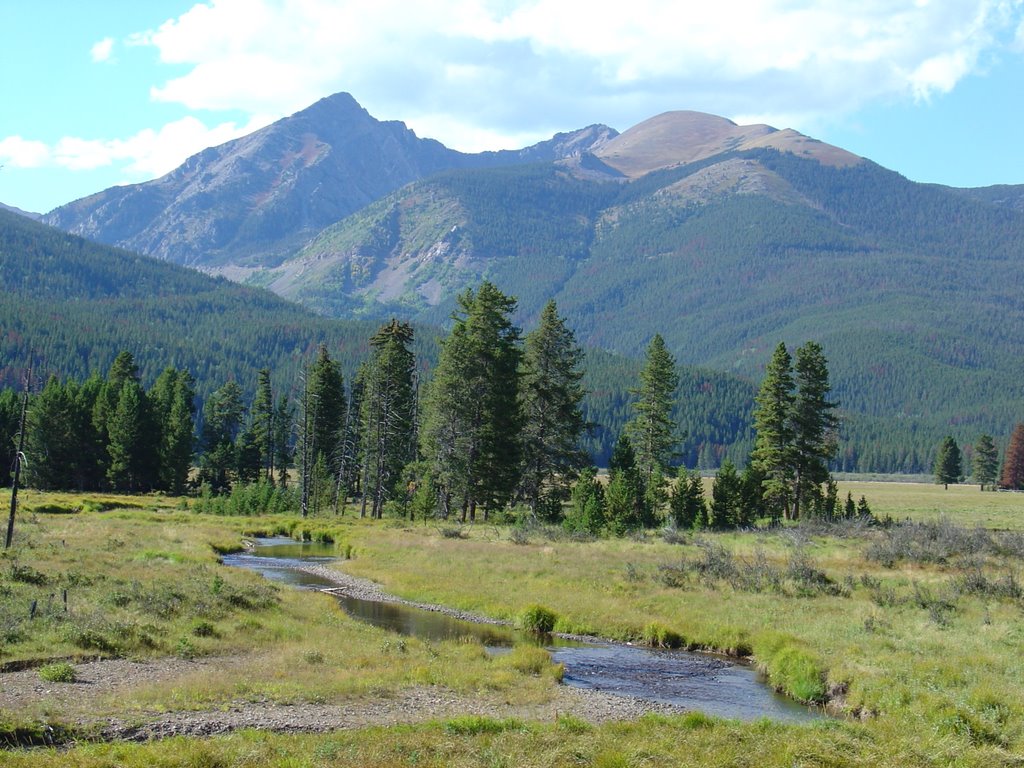The infamous Hatfield-McCoy family feud lasted from the Civil War through the trial of Johnse Hatfield in 1901, finally ending only by an old-fashioned public hanging in Pike County, Kentucky. More than a dozen family members and friends had been murdered, including a New Year’s Eve Massacre, and a pitched battle between two small armies at Grapevine Creek. In 2003 a “formal truce” was signed by 60 descendants of both families, settling it once and for all. Reo Hatfield said, “Sometimes you have to fight, but you don’t have to fight forever.” He ought to tell that to the politicians and lawyers battling over federal control of water for the last 50 years.
Next week, the U.S. Supreme court will decide whether to hear a case that provides – finally – a chance to clarify the definition of “Waters of the United States” (WOTUS). Western leaders, environmental activists, lawyers, and landowners across the country have argued about “WOTUS” for decades. Yet the need for another definition is peculiar, because Congress defined it clearly in the Clean Water Act of 1972, which created federal jurisdiction over “Navigable Waters of the United States.” I may be all alone, but I still refuse to use the term “WOTUS.” I call it “NWOTUS,” because that is what the law says.

If water is not navigable, Congress did not intend to claim federal jurisdiction. That’s because water belongs to the states, not the federal government, unless it involves interstate commerce. That necessarily means “navigable” waters, the term used in the Clean Water Act. That landmark anti-pollution law gave EPA and the Army Corps of Engineers authority to regulate activities that affect “jurisdictional waters.” The Act has been amended four times since 1972, yet Congress never changed that clear direction. It intended to stop pollution of navigable waterways, which involve interstate commerce, and asserted no federal authority over smaller bodies of non-navigable state waters. The Constitution gives Congress no other basis for regulating state waters.
Specifically, the Clean Water Act of 1972 contains the phrase “waters of the U.S.” in twelve places. Of those, nine use the phrase “navigable waters of the U.S.,” and the other three refer specifically to barges and the Gulf Inter-coastal Waterway. In the definitions section, “navigable waters” is defined as “waters of the U.S.,” meaning the terms are synonymous. However badly EPA wishes otherwise, there are no waters of the U.S. that are not navigable. Not in the law.
Nevertheless, since 2015, there have been four different federal rules defining jurisdiction over “WOTUS,” with EPA reversing itself under different Administrations and leaving a complete mess for both landowners and regulators. In the Obama era, EPA asserted its authority over virtually all water, including seasonal stock-watering ponds specifically exempted by Congress, as well as every river, stream, creek, brook, run, lake, pond, puddle, and gutter runoff. Some landowners have been stopped from the otherwise legal use of their property, and it is one of those cases, Sacket v EPA, that now begs the nation’s highest court finally to settle it.
The legal quagmire stems from the 2006 Rapanos case, in which the Supreme Court divided on whether NWOTUS includes wetlands. Four Justices shared the opinion, written by Justice Antonin Scalia, that the law applies to waters that are actually navigable, and to wetlands with a “continuous surface connection” to jurisdictional waters, which “might make it difficult to tell where the ‘water’ ends and the ‘wetland’ begins.” One Justice, Anthony Kennedy, concurred with the ruling, but not the reasoning. He wrote a separate opinion – alone – not requiring a continuous surface connection, but merely a “significant nexus” between wetlands and navigable waters. That vague difference is vital. Obama’s EPA used Kennedy’s opinion as the basis of its over-reach, which the Trump Administration withdrew, relying instead on Scalia’s plurality opinion. Biden withdrew Trump’s interpretation, giving EPA orders to write a new one, more like Obama’s.
Sadly, there is almost no chance the Supremes will even agree even to hear this case. Less than one percent of petitions for hearing are granted each year. Moreover, EPA is able to argue that the case is not “ripe,” because the agency is still working on yet another new WOTUS rule, to be finalized soon. That leaves the entire sordid debate in continuous limbo, like a generational feud. It shouldn’t require a public hanging, nor a pitched battle in the woods, to resolve this dispute. It has gone on too long, and if the Court won’t settle it, Congress should.




Comments on this entry are closed.